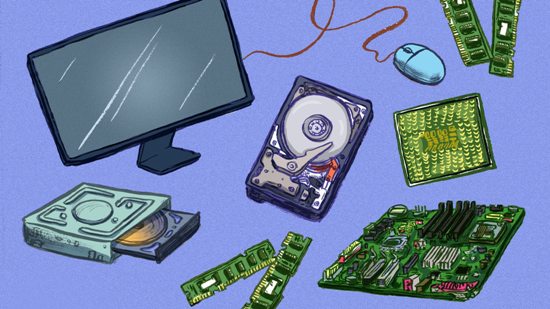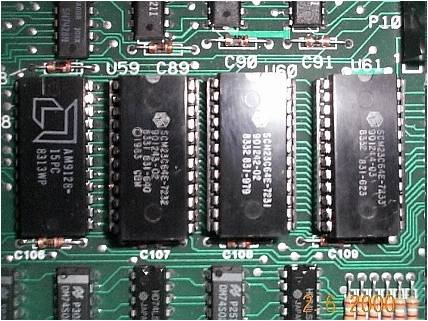- Frequently connect us:
- 91-9540173525
- info@aradhanainstitute.com
Brief About Hardware Components of a Computer

News Portal Registration in india
November 22, 2020
Front and back Cases of a computer
June 4, 2021Brief About Hardware Components of a Computer
Motherboard
Motherboard is the most important hardware component of the computer. Motherboard is the hardware component that holds the other hardware components together as a single unit. The motherboard, or mainboard, of a PC is a large circuit board that is home to many of the most essential parts of the computer like: microprocessor, chipset, cache, memory sockets, bus, parallel and serial ports, mouse and keyboard connectors, hard disk and floppy disk sockets etc.
Microprocessor
Microprocessor or Processor or Central Processing Unit is the heart of every computer. It is designed to perform all of the arithmetic, logic and other basic computing steps that make up the actions of your computer. Whenever a user executes a word processor, a computer game, a browser or any other software program, the CPU performs hundreds or even thousands of instructions. The microprocessor is a piece of electronic circuitry that uses digital logic to perform the instructions of the software.
A microprocessor is an integrated circuit – a thin slice of silicon crystal packed with microscopic circuit elements like: wires, transistors, capacitors, resistors.
Random Access Memory (RAM)
The Random Access Memory (RAM) is used to store data, instructions (programs) which are accessed by the CPU for execution. RAM is also known as main memory or primary memory. The data or instructions stored on the RAM can be accessed at random. Hence the name Random Access. RAM is known as volatile memory means, the data or information stored on the RAM is wiped out once the computer is turned off or the power goes off.
RAM is of two types namely, Static RAM (SRAM) and Dynamic RAM (DRAM). In SRAM the electronic components used are flip-flops. The size of flip-flop is generally bigger than other electronic components like capacitors and transistors. Hence the size of SRAM’s is smaller when compared to DRAM’s. Also SRAM is faster when compared to DRAM. DRAM is made of capacitors and transistors. DRAM requires to be refreshed at regular intervals to retain the data. Hence DRAM is slower when compared to SRAM. DRAM’s are available in larger sizes when compared to SRAM’s. The widely used type of RAM being used now-a-days is DDR SDRAM (Double Data Rate Synchronous Dynamic Random Access Memory). There are various in this type of RAM like: DDR2 SDRAM and DDR3 SDRAM.
Read Only Memory (ROM)
Read Only Memory is a non-volatile memory in the computer. It is used to store firmware (software which is tightly coupled with the hardware). As the name implies this memory can only be read and the data stored on it is permanent i.e., data is retained even when the computer is turned off or the power goes off. Generally ROM’s are used to store BIOS (Basic Input Output System) also known as firmware.
Read Only Memory is of two types: masked ROM’s and non-masked ROM’s. Masked ROM’s are programmed before they are available in the market. Once they are purchased, they cannot be reprogrammed. Non-Masked ROM’s can be reprogrammed even after they are purchased from the market. There are three types of non-masked ROM’s. They are:
1) PROM (Programmable Read Only Memory)
2) EPROM (Erasable Programmable Read Only Memory)
3) EEPROM (Electronically Erasable Programmable Read Only Memory)
PROM: Programmable Read Only Memory (PROM) or also called as One Time Programmable (OTP) ROM can be written to via special device known as PROM programmer. PROM can be programmed only once.
EPROM: This type of ROMs can be erased by exposing them to strong Ultra Violet rays. These ROMs can be programmed multiple times. Continuous exposure to UV rays will result in wearing out the ROM and making it unusable.
EEPROM: This type of ROM allows the entire ROM or selected banks of memory to be erased and rewritten electrically. There is no need for EEPROMs to be removed from the motherboard to be reprogrammed. EEPROMs can be reprogrammed multiple times.
The ROM must store the data permanently. The data must not be wiped out when the computer is turned off or the power goes off. To help the ROM to store its data permanently, motherboard consists of a CMOS battery, which supplies power continuously to the ROM.






